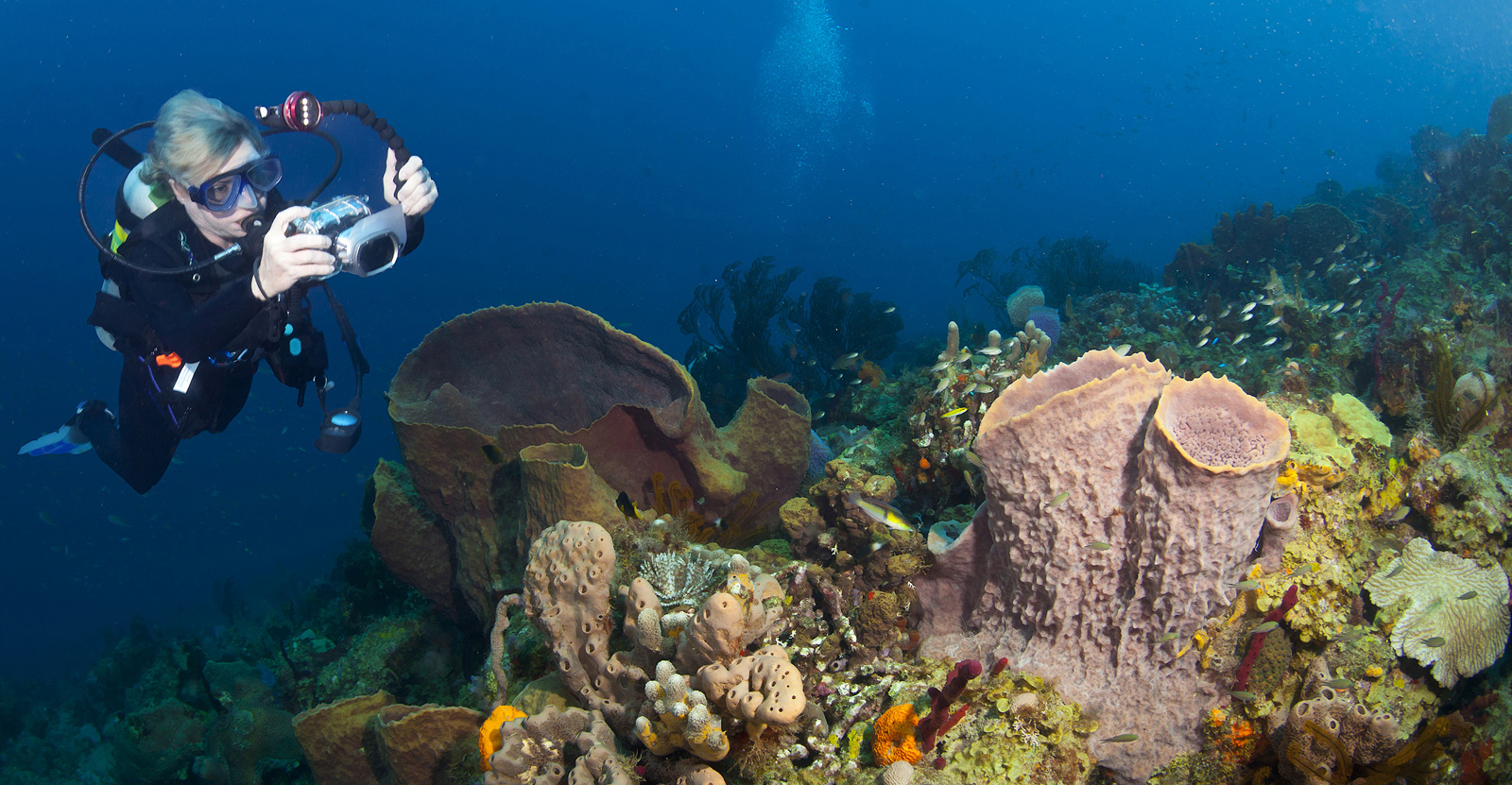Professional underwater photographer Sterling Zumbrunn has created a complete guide for beginners to help you get starter.
This article covers everything, from diving skills to camera gear. Learn the basics from the best and you will have what it takes to become a great photographer under the water as well as above it.
1. Know how to dive well
The very first thing to keep in mind is that the foundation of underwater photography is good in-water skills. If you don’t have buoyancy mastered, getting well composed and lit images is going to be a challenge. Worse, you pose a threat to the environment as you crash into the reef while trying to take your shots. Further, underwater photography is exciting and a lot of fun, so it’s all too easy to lose track of time—which can be deadly because of limited air supply and bottom time related to decompression sickness.
For safety’s sake, diving needs to be second nature. The best way to start learning how to dive in the first place is to find a local dive shop and take some classes (which cost about $300 plus gear you might need to rent/buy) or to go on a vacation someplace warm (Hawaii, Florida, Indonesia, Australia, etc.) and find a shop there, but realize you’ll need a couple of days to study and to do actual dives, so plan ahead.
2. Get close to animals. Now, even closer, but carefully and smoothly.
Get close, then get closer! Whatever size your subject is, the most important principle to remember when taking images or video underwater is that you need to shoot through a minimum of water. Water is nearly 800 times as dense as air, and it sucks out color from full spectrum light, so in order for your images to have clarity, contrast, and bright colors, you’ll need to be right on top of your subjects. If you think you’re close enough, you probably should be even a little bit closer. You’ll have to do this by being relaxed and learning how not to spook creatures by letting them get used to you, breathing calmly and approaching with your camera already up.
For awe-inspiring underwater photography and videography, you absolutely have to go wide, especially if you want to capture large animals or landscapes. Shooting wide allows you to get very close to a subject for maximum clarity and light while still fitting your subject (say, a dolphin’s entire body) into the frame. The other aspect of getting close is that there’s a minimization of the amount of particulate between you and your subject (suspended in even apparently clear water) that can bounce your flash back, causing a sort of visual fog called backscatter.
Ordinary focal lengths just don’t work well because you’re shooting through too much water and capturing dim, murky images. This need for wide-angle shooting has a direct impact on your camera and housing choices and affects the recommendations we’re making in this article. Macro is the other key lens type to think about. Cameras that can focus close and deliver good magnification are going to be better at capturing the innumerable creatures of the underwater world. Normal and telephoto lenses have virtually no role underwater—leave them at home and save some space in your bag.
Shoot upwards towards the surface, not down (in nearly all cases), so your perspective includes more than just the sea bottom. If you aim your camera down, you are likely going to end up with a jumbled mess as your subject blends into the background of coral to the point where it’s hard to even pick apart the two. Separation is the name of the game; upward angles are key for isolating your subject against the water column. Exceptions: creatures with beautiful backs like sharks, cetaceans, and turtles against contrasting backgrounds like sandy bottoms or open ocean. Trying to shoot is why many photographers opt to use expensive 45 degree or 90 degree viewfinders.3. Shoot upwardsAs with any type of photography, proper exposure is critical to get good results when shooting underwater. However, underwater photography adds additional complexity because artificial lighting is used most of the time. This requires balancing light from strobes or video light with the ambient light in the scene, especially in wide angle. This is done by dialing in shutter speed, ISO, strobes, and aperture independently, so it’s good to get comfortable with your camera’s manual mode.4. Expose things properly
Assuming an ISO is fixed at the right level, in a nutshell an underwater photographer lights a foreground subject by adjusting the aperture and your lighting system’s power. Then, since strobes are faster than the shutter speed and won’t be affected by the adjustment of that, the shutter adjustments are used to correctly expose the background to be light or dark blue (depending on the photographer’s preference). The best underwater images put the viewer in the underwater environment without making it obvious that the image was artificially lit.
Read the full article over at The WireCutter.
Source: The WireCutter


Janaki Mayhill
Janaki Mayhill